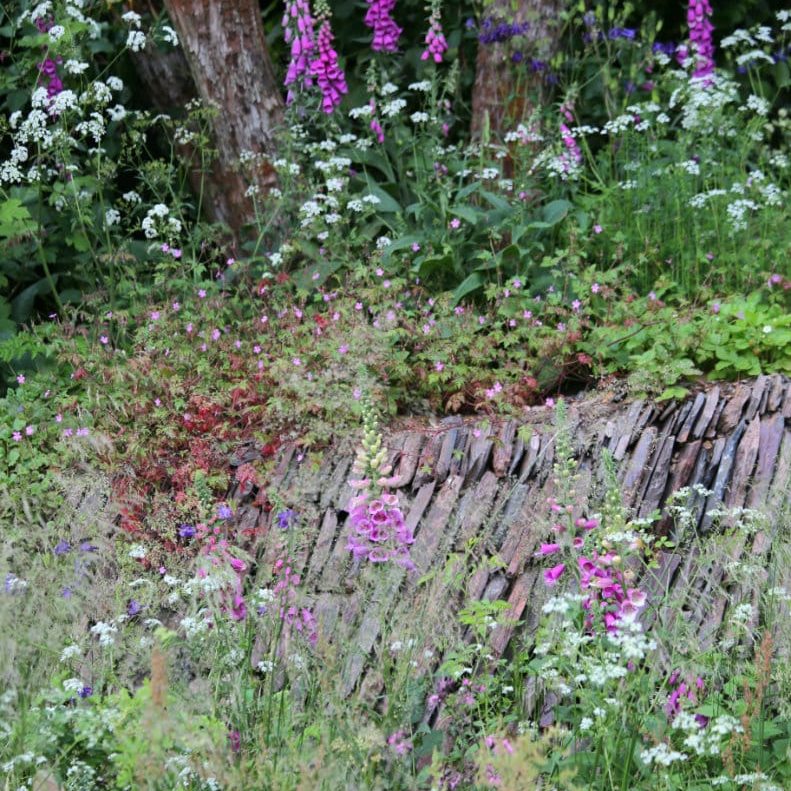What does chop and drop mean? and is it a good solution for every garden?
The “chop and drop” method of gardening is a relatively new concept, considered a more sustainable and low-maintenance technique that involves cutting down plants or parts of plants and leaving the cuttings on the ground to decompose naturally. This method mimics natural processes, enriches the soil, and promotes a healthier garden ecosystem.

How To Implement The Chop And Drop Method
- Select the Plants:
- Identify plants that can be used for chop and drop, such as cover crops, legumes, herbs, and fast-growing perennials. Plants with high biomass and nutrient content are ideal.
- Chop the Plants:
-
- Use secateurs, deadhead or cut the plants down to the desired height. This can also be done with mature perennial plants at the end of the growing season, when carrying out the ‘Chelsea Chop’ or when pruning shrubs and trees.
- Drop the Cuttings:
-
- Simply drop the cut plant material directly onto the soil surface around beds and borders, trees, and shrubs. Make sure the cuttings are spread evenly to avoid thick layers that might smother other plants.
- Layering:
-
- You can chop and drop in layers over time, adding fresh cuttings periodically as plants grow back. This ensures a continuous supply of organic matter.
- Monitor and Maintain:
-
- Keep an eye on the decomposing material. If the layer becomes too thick, gently turn it with a rake to speed up decomposition and prevent pests.
Pros of the Chop and Drop Method
- Soil Health Improvement:
- Decomposing plant material adds organic matter to the soil, improving soil structure, fertility, and microbial activity.
- Moisture Retention:
-
- The plant layer acts as mulch, helping to retain soil moisture and reduce the need for frequent watering.
- Weed Suppression:
-
- A layer of plant material can suppress weeds by blocking sunlight and preventing weed seeds from germinating.
- Nutrient Cycling:
-
- As the plant material decomposes, it releases nutrients back into the soil, providing a natural and continuous source of fertilisation.
- Biodiversity Support:
-
- The chop and drop method creates a habitat for beneficial insects, earthworms, and microorganisms, in turn providing food for birds, thus enhancing garden biodiversity.
- Reduced Waste:
-
- Utilising plant cuttings on-site reduces the need to transport garden waste and contributes to a more sustainable garden practice. It’s also much easier than composting and a better use of space.
Cons of the Chop and Drop Method
- Pest Attraction:
- In some cases, decomposing plant material may attract pests such as slugs, snails, or rodents. Monitoring and managing the amount of material (thickness) can mitigate this.
- Aesthetic Concerns:
-
- Some gardeners may find the appearance of chopped plant material less tidy or visually appealing compared to traditional mulches (although this is simply a matter of a mind shift).
- Slow Decomposition:
-
- In cooler climates such as the UK when dealing with tougher woody plant materials, decomposition may be slow. Shredding the plant material before dropping it can help speed up the process and also looks tidier.
- Potential Disease Spread:
-
- If the chopped plants are diseased, the pathogens could spread to healthy plants. It’s important to only use healthy plant material for this method.
- Limited Use:
-
- Seeds that have matured on the plant prior to cutting may germinate and cause weed issues.
Best Practices for Chop and Drop
- Use Healthy Plants: Ensure the plants you are chopping are free from disease to avoid spreading pathogens.
- Diverse Plant Material: Use a variety of plants to provide a balanced range of nutrients.
- Shredding: Shredding or chopping plant material into smaller pieces can help it decompose faster.
- Regular Application: Apply chop and drop material regularly to maintain a consistent layer of organic matter.
- Do not allow decomposing matter to build up around the crown, trunk or stems of the plants: This may cause plants to rot over winter
- Act quickly: Allowing seeds to dry and drop may increase the number of unwanted weeds/plants.
We’ve experimented with this method with a few of our willing clients in their gardens as part of our aftercare services, and although the plants seemed to love it and it made financial sense, many clients did not like the ‘un-gardened’ appearance, or when the increased worm activity encouraged additional bird activity (as they love to scramble about in the mulch in search for food and often create mess).
By integrating the chop and drop method into your gardening practices, you can create a healthier, more sustainable garden ecosystem with minimal effort and cost but a mind-shift of what is considered ‘tidy’ may be required! I love the concept … I’ll let you decide if it’s for you.
If you’d like to see more informative content, you can visit The Northern Designer on Instagram.
Article created July 2024.
Lee Bestall
Founder & Design Director at Bestall & Co Landscape Design, a practice recognised as one of the best garden design companies in the North & Midlands of England. Lee's objective in life is to facilitate the design and build of fabulous gardens and sculpt beautiful landscapes which enhance the natural beauty of the world, as well as transforming the world his clients live in. "My personal mission is to design my own park or village based around a central courtyard garden. My goal in business is to create a nationwide design consultancy which can support my dream." Read more >> or Connect with Lee on LinkedIn >>



